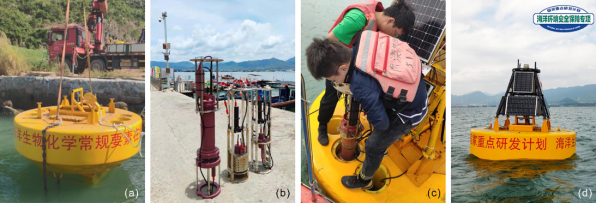SZ team develops new underwater imaging system
A research team at Shenzhen Institute of Advanced Technology (SIAT), Chinese Academy of Sciences has made new advances in marine in-situ observation instruments, Shenzhen Economic Daily reported.
The team, led by senior engineer Li Jianping, developed a new underwater imaging system for in-situ monitoring of marine plankton and conducted long-term sea trials on moored surface buoys in Daya Bay. The research results were published in the IEEE Journal of Oceanic Engineering.
Plankton play a vital part in marine ecosystems and biogeochemical cycles. At the same time, these small and widely distributed organisms also form an important basis for marine fisheries and aquaculture production.

Staffers from Shenzhen Institute of Advanced Technology (SIAT), Chinese Academy of Sciences operate a new underwater imaging system for in-situ monitoring of marine plankton. Courtesy of SIAT
For a long time, plankton monitoring has relied on time-consuming and laborious manual methods and optical microscope analysis, which also faces a shortage of identification talents.
Since the 1990s, a variety of optical in-situ imaging technologies for marine plankton ecology have emerged, but the existing underwater imagers also have limitations as they cannot be easily integrated into the buoy platform to realize long-term offshore operation.
To improve plankton observations, Li’s team developed an underwater dark field color imaging system, which adopts a new orthogonal layered flash shadowless lighting design.
The system realizes high-quality underwater true color photography of individual marking plankton, it also reduces illuminating light leaks to the local underwater environment.
On June 22 last year, the imaging system was integrated into a surface buoy and deployed in Daya Bay’s Shenzhen sea area. It was successfully recovered Feb. 25 this year.
During the uninterrupted eight-month sea trials, the instrument successfully obtained the time series data of plankton abundance changes in the sea area and observed the diurnal vertical migration of zooplankton and the dynamic changes of dominant species in the area.
It also monitored the outbreak of Creseis acicula or straight-needle pteropod, recorded for the first time in Daya Bay, providing the nuclear plant an early warning for dealing with disasters in a timely manner.
In the future, the team will further explore miniaturized, intelligent and network-based marine in-situ observation sensors and instruments, according to the Daily report.